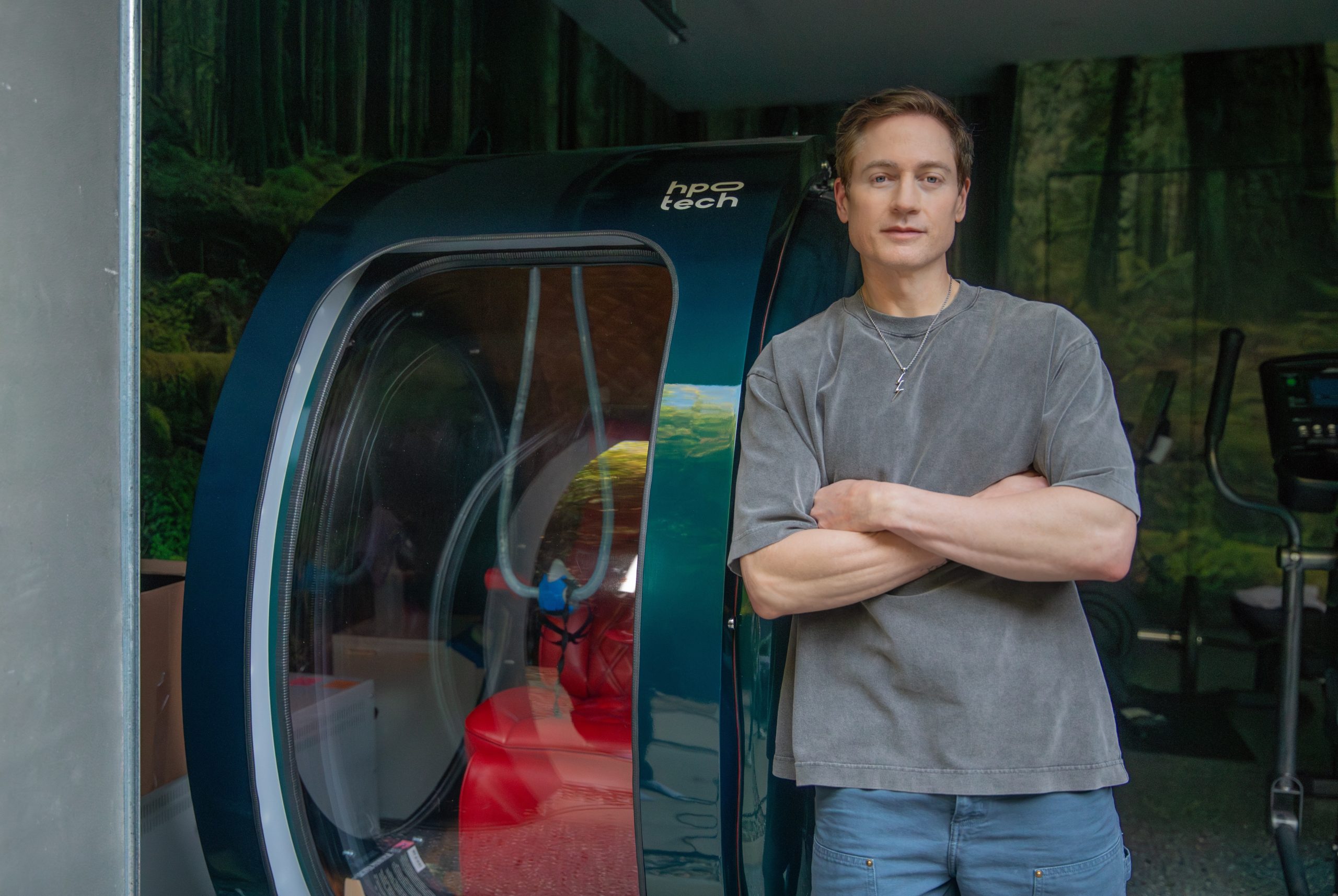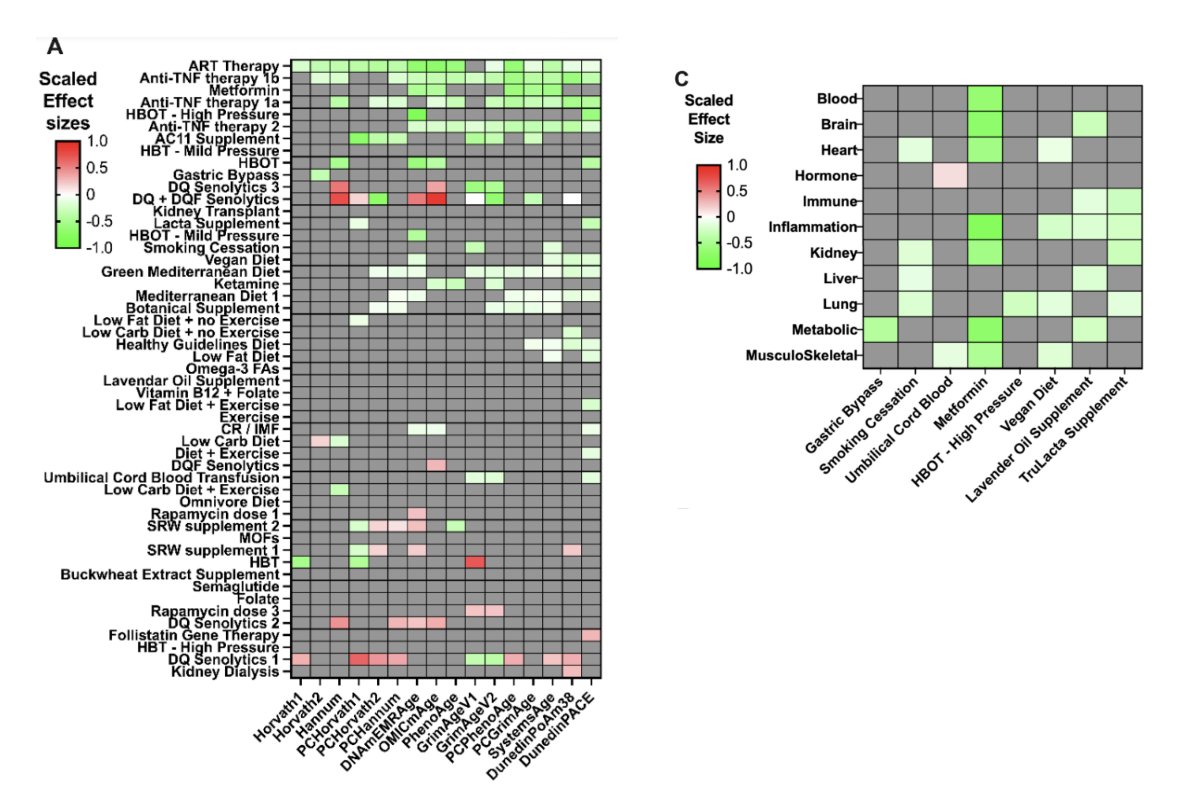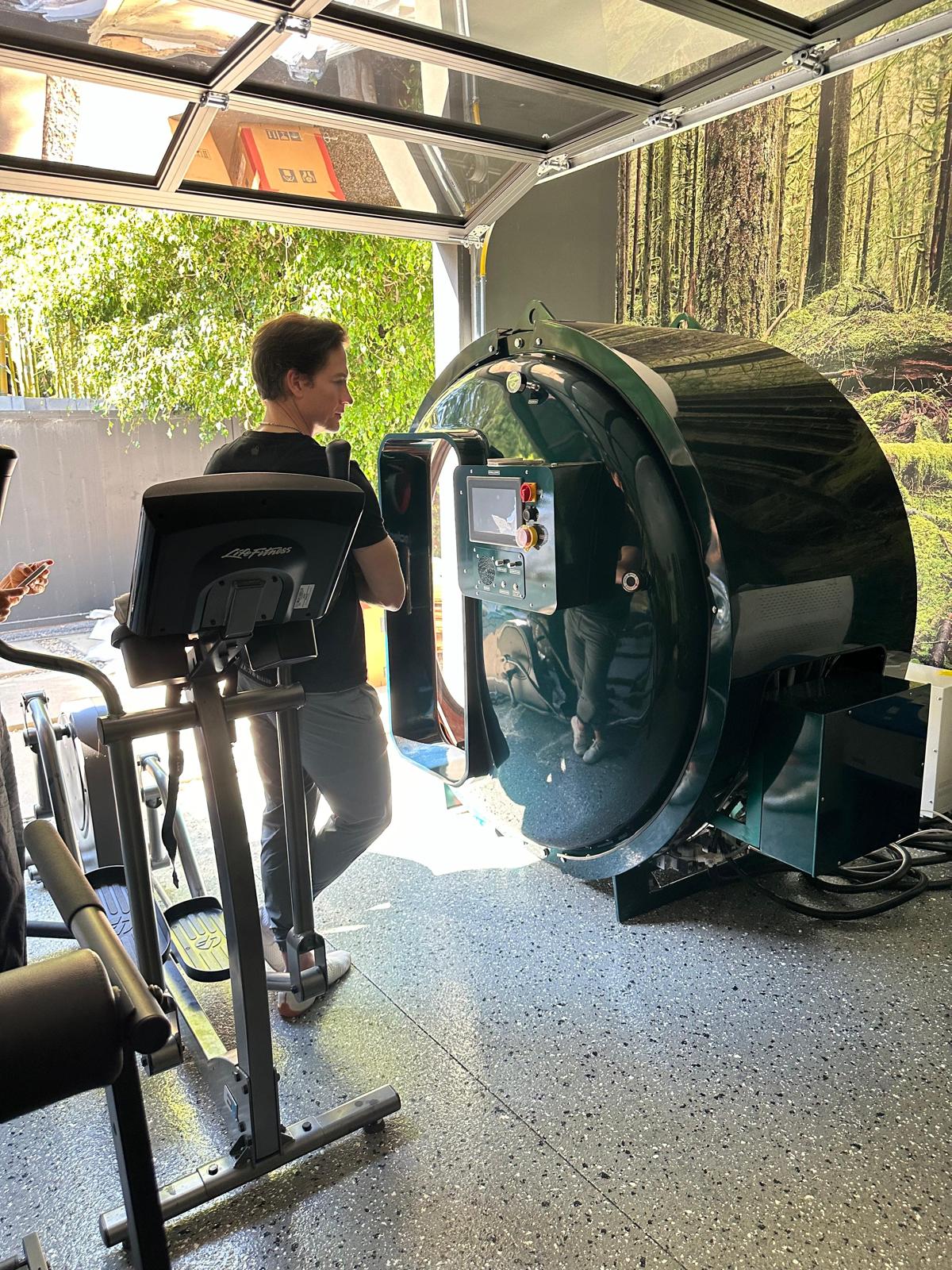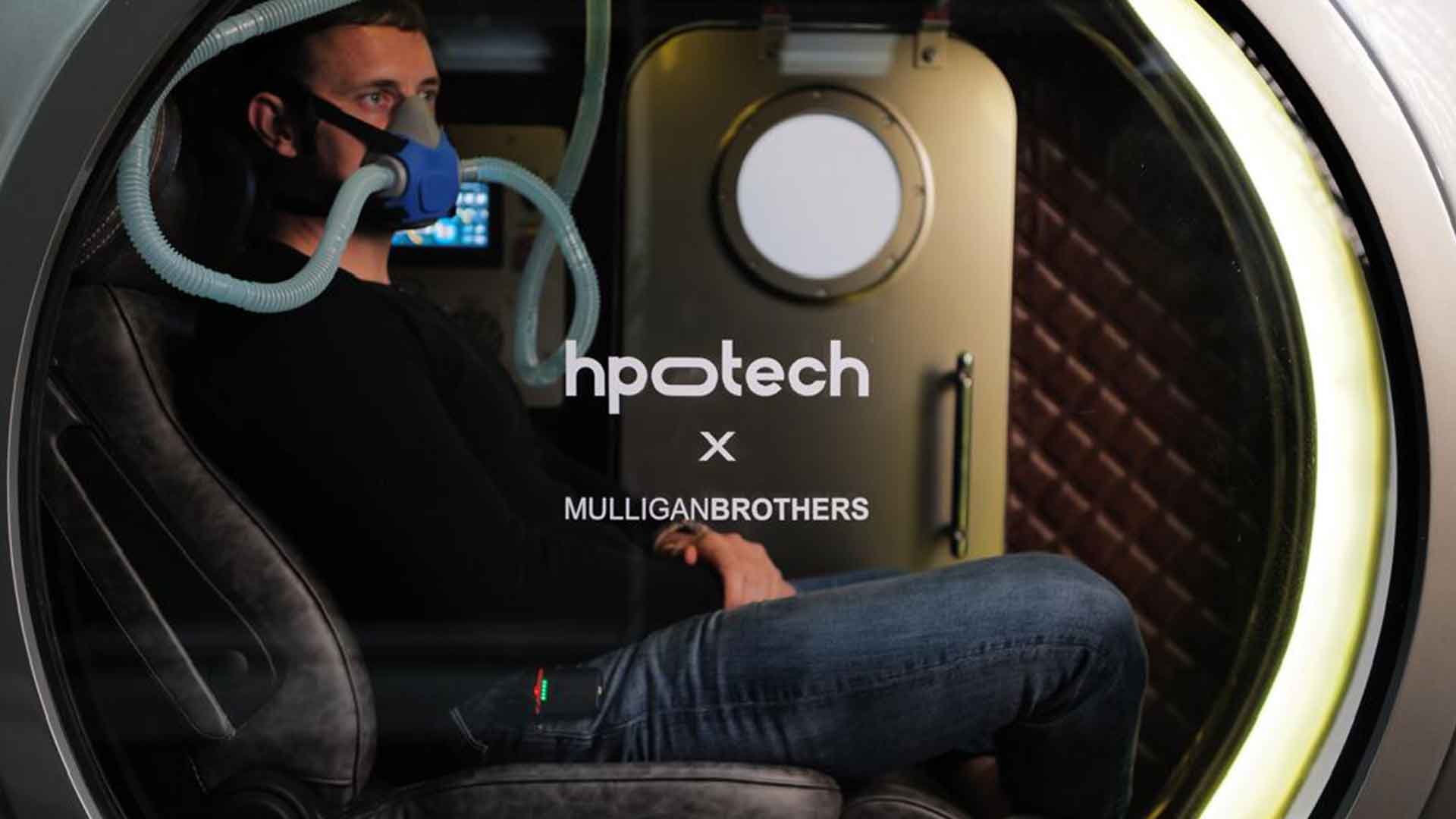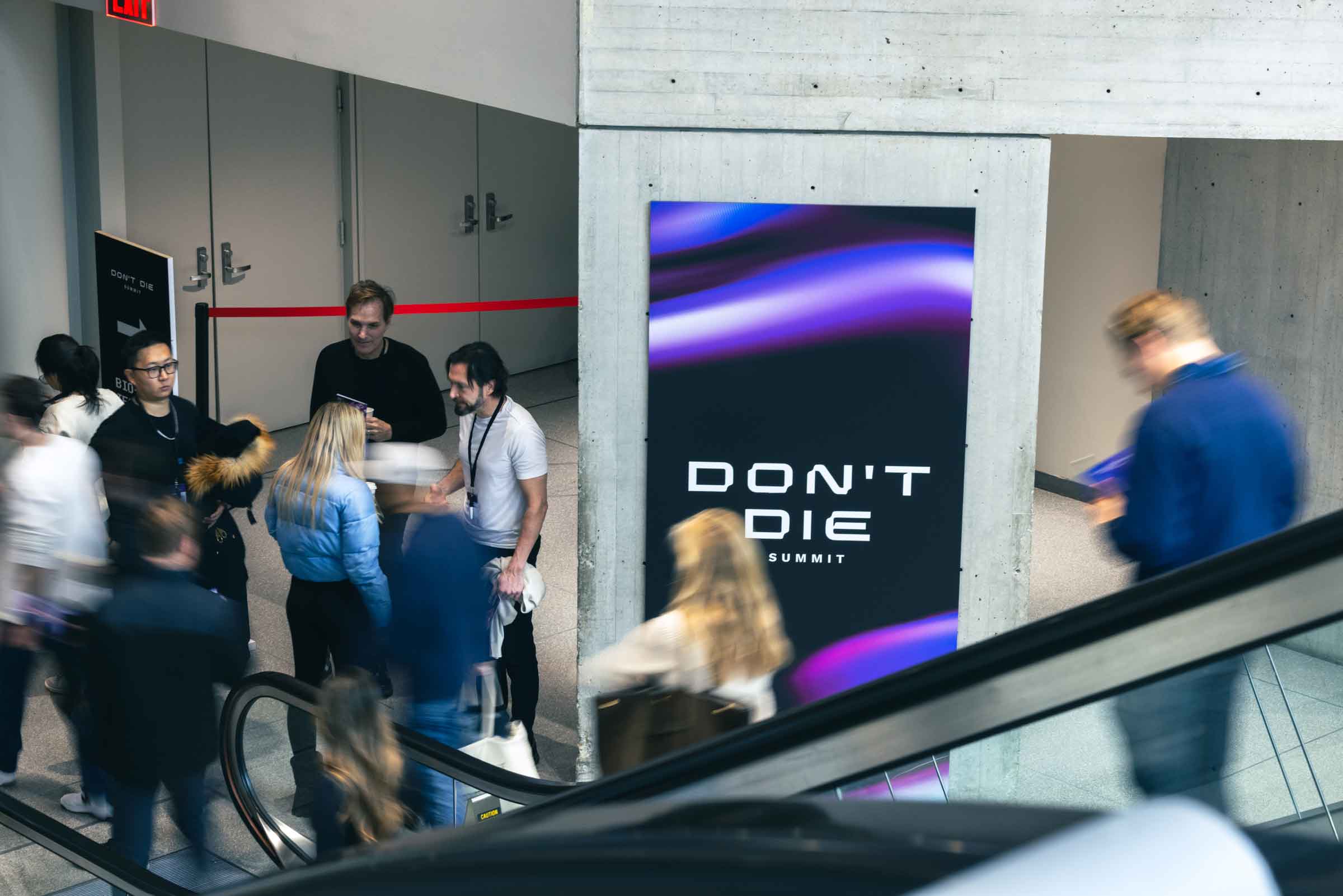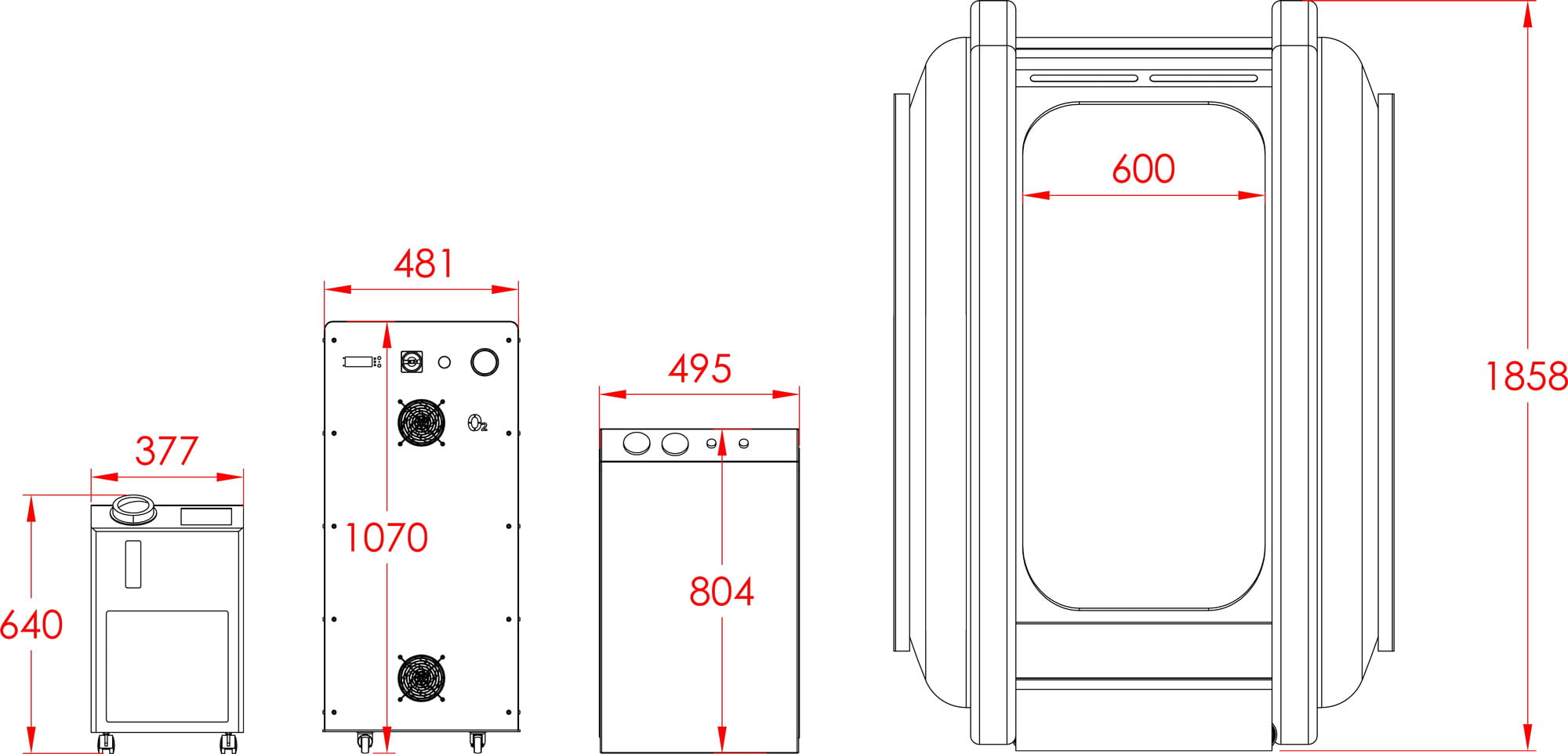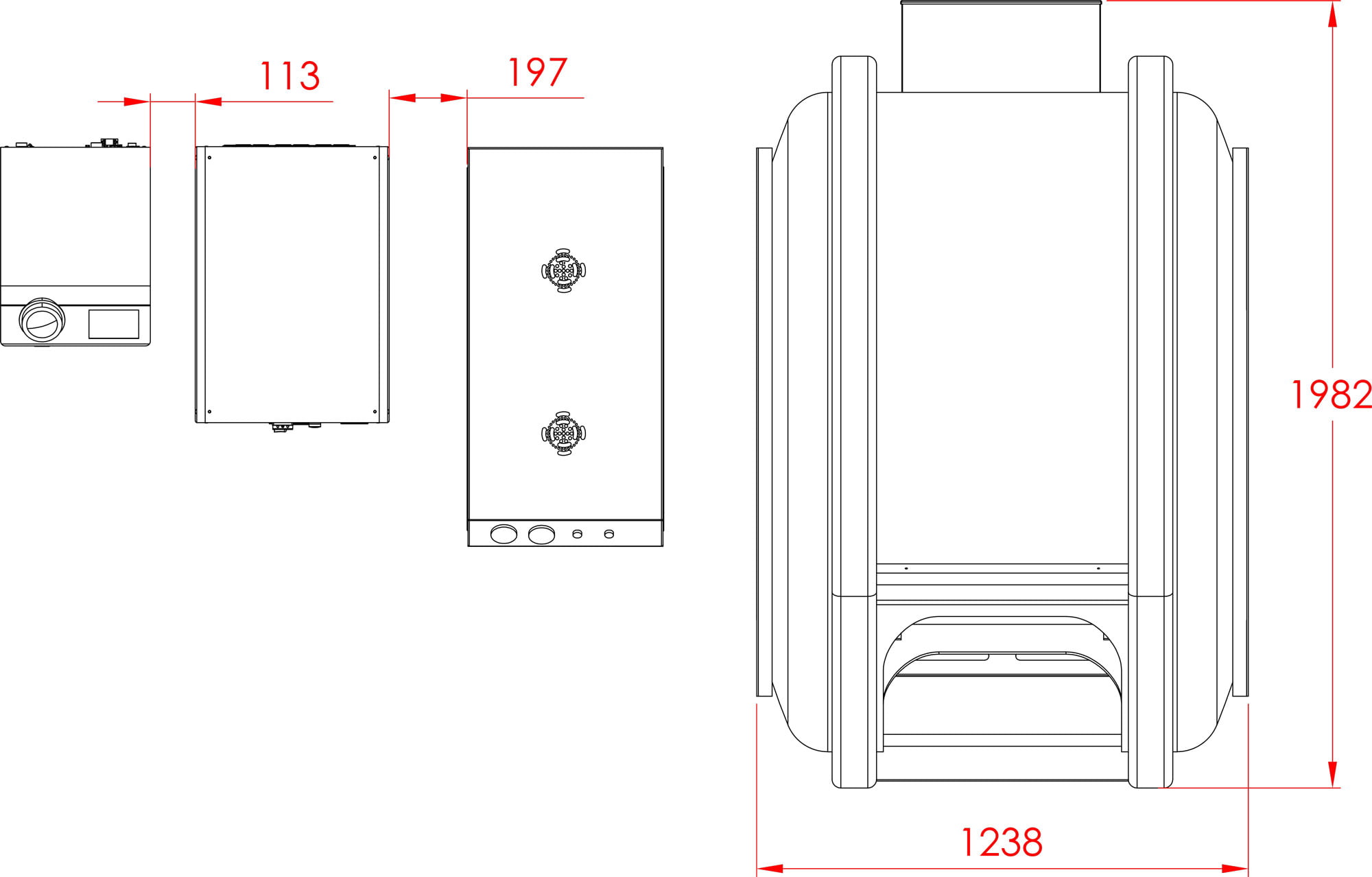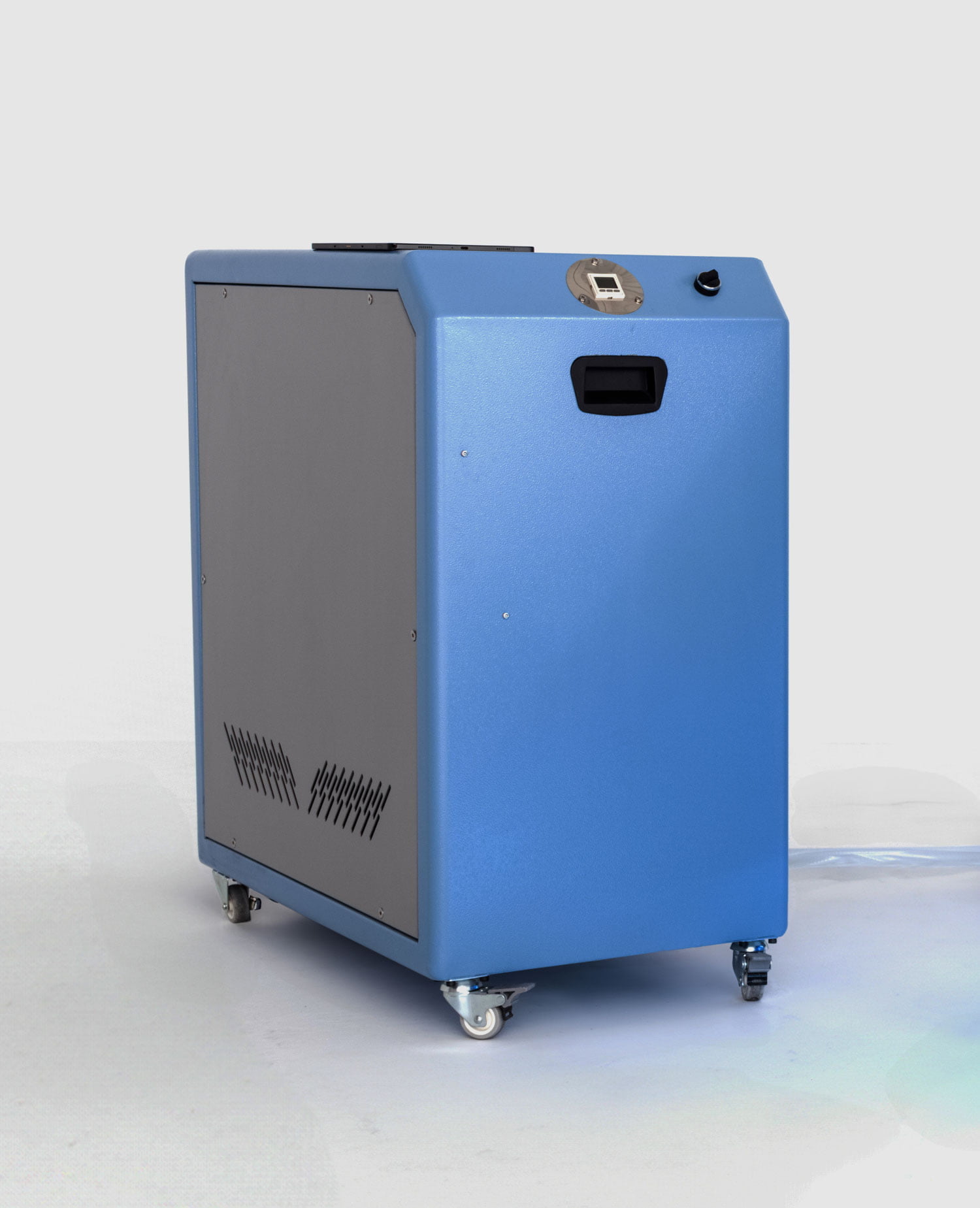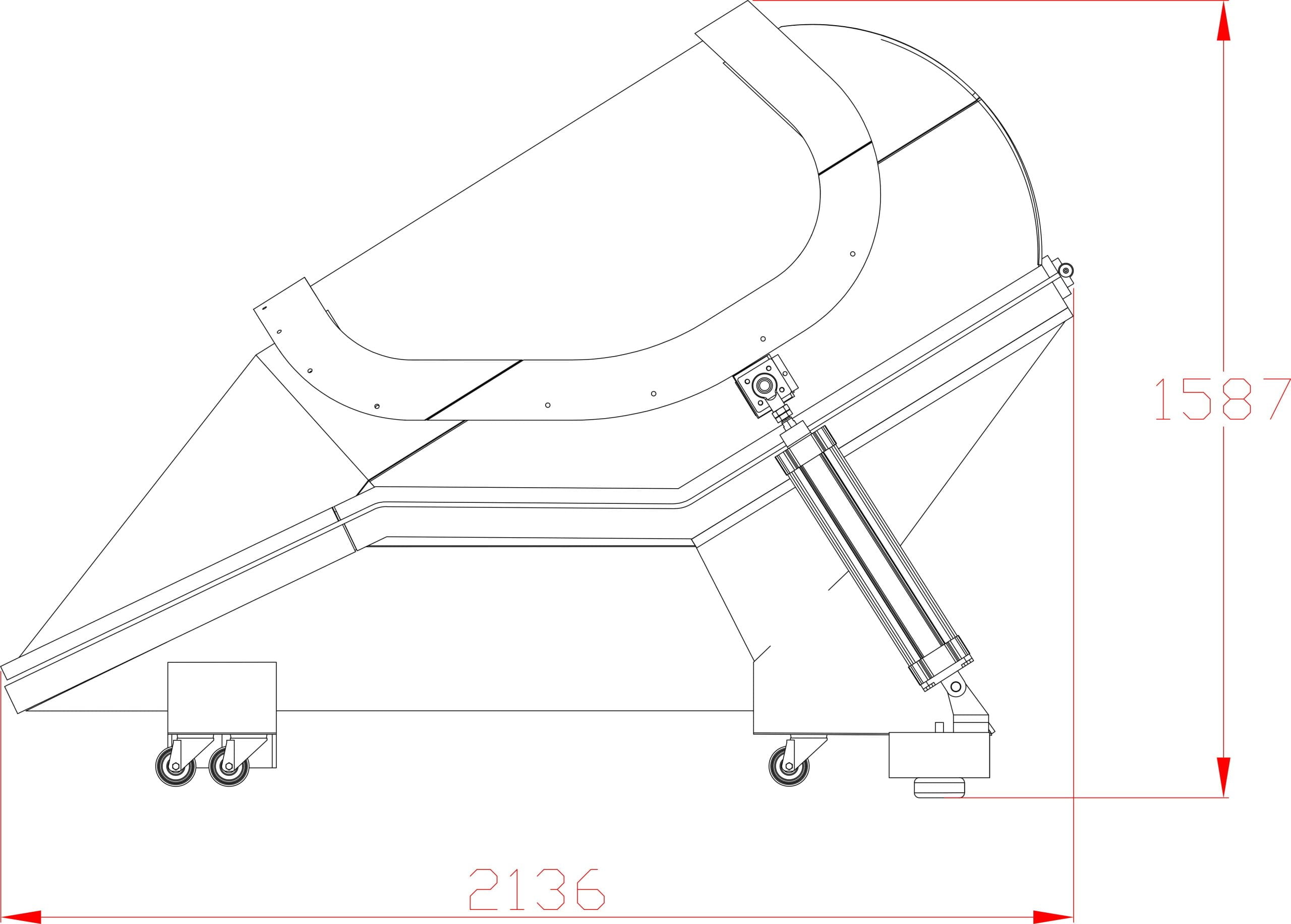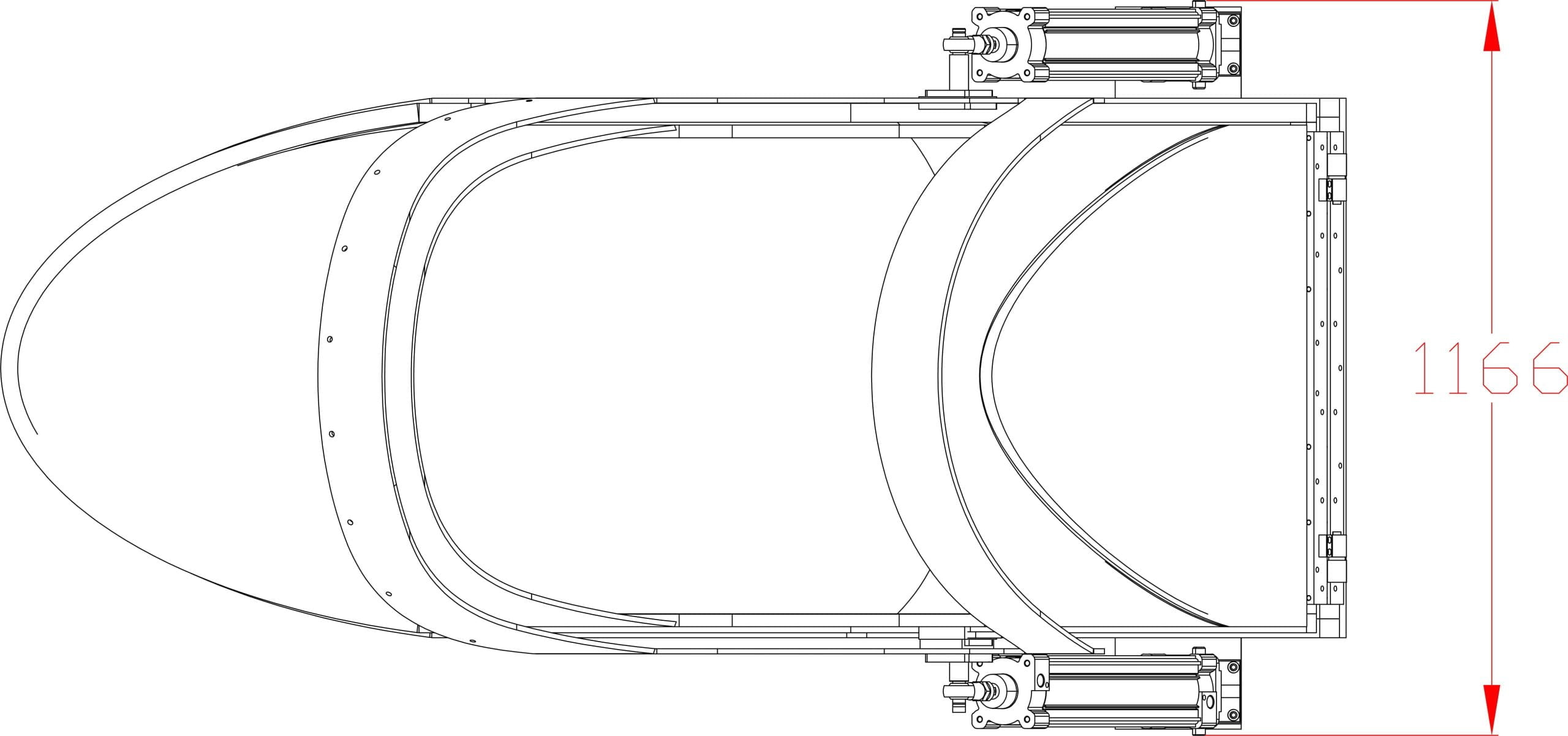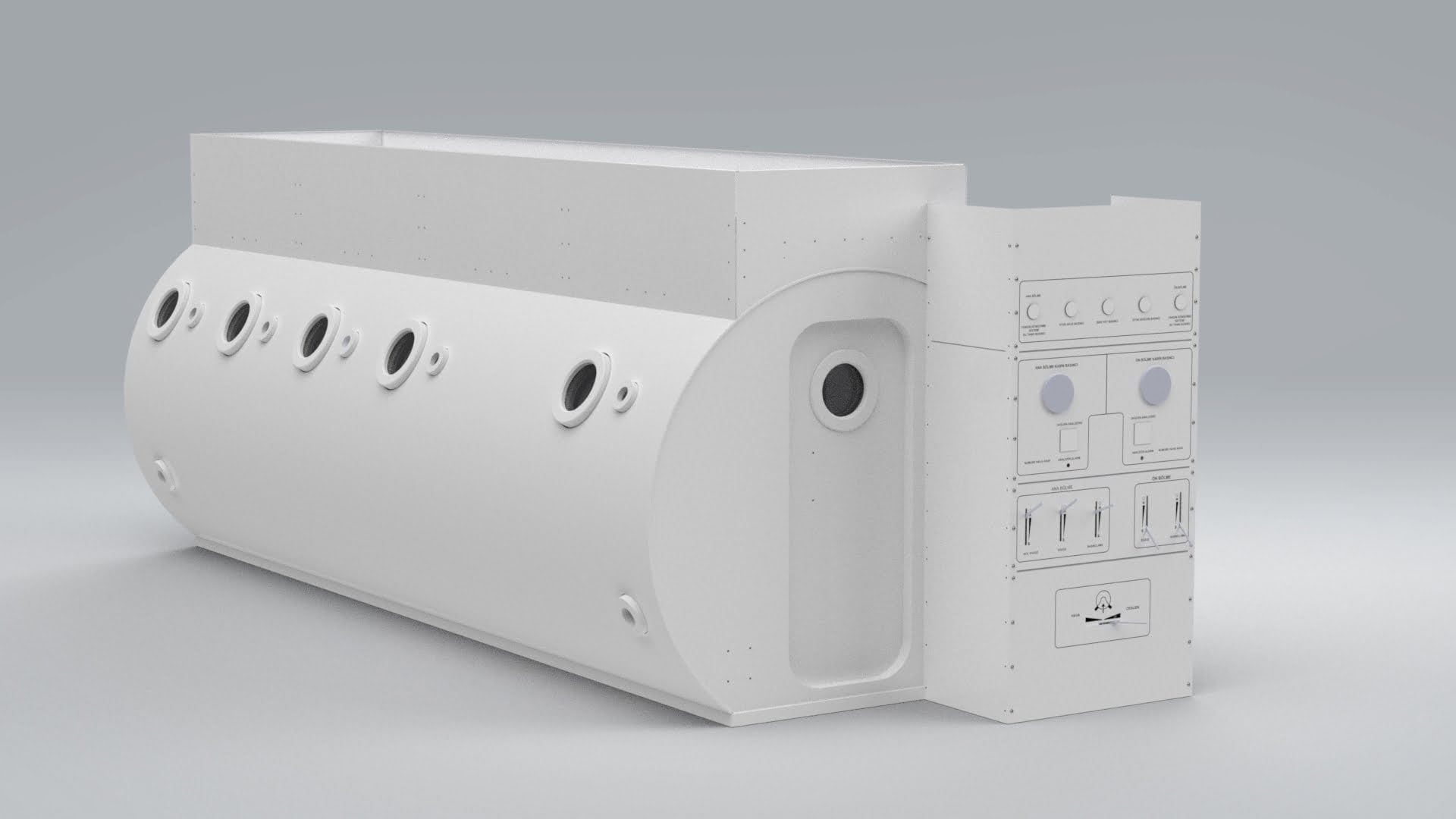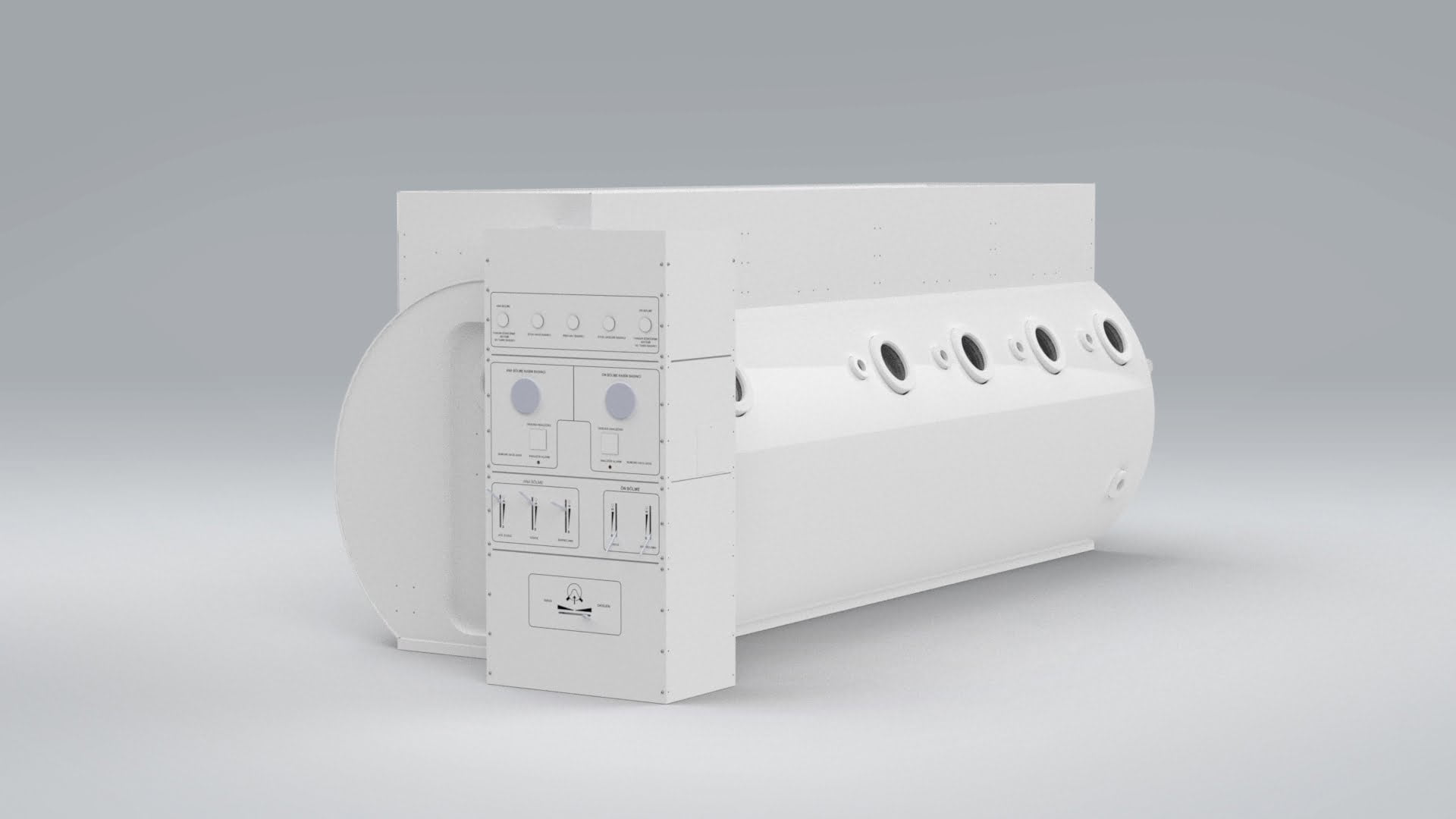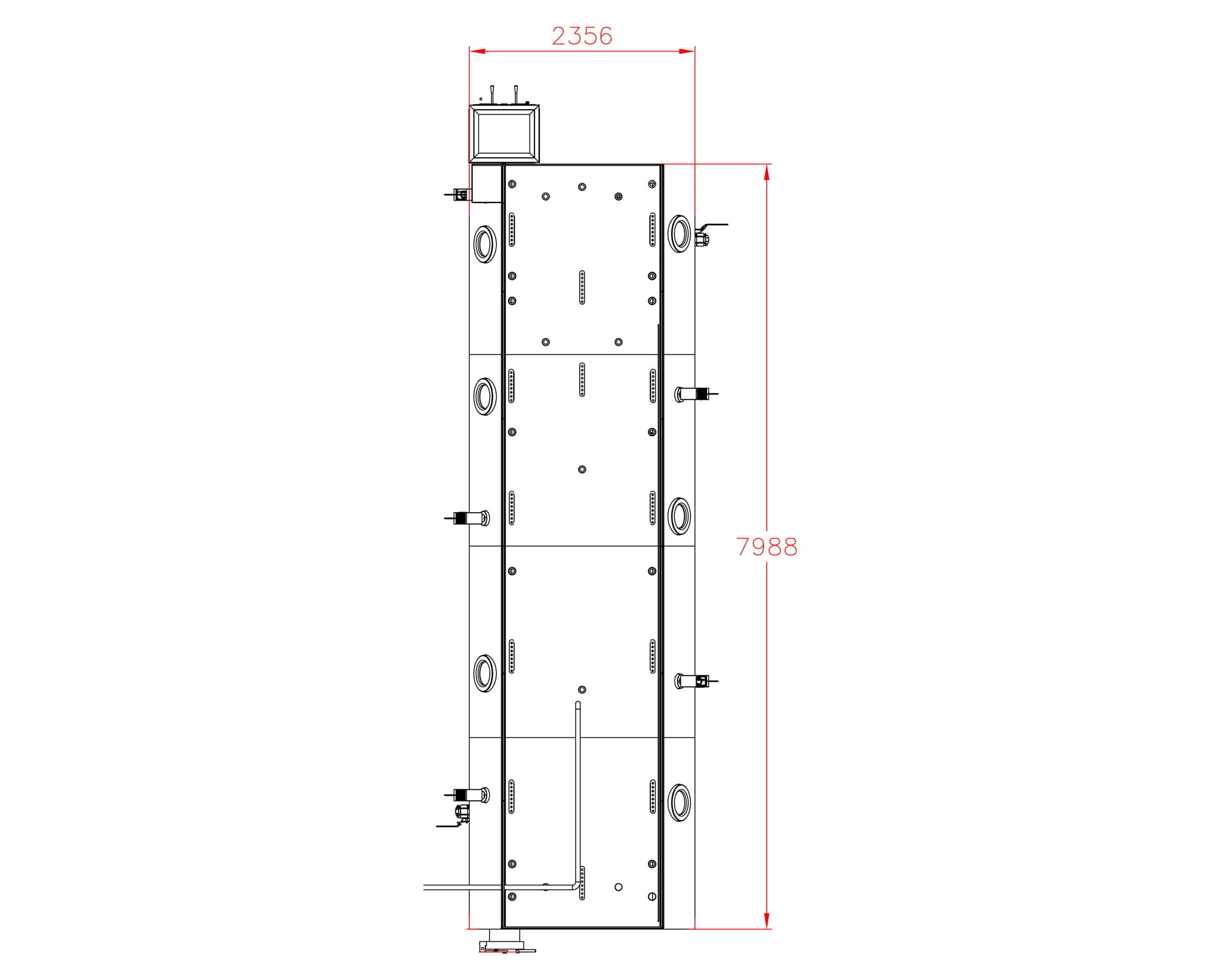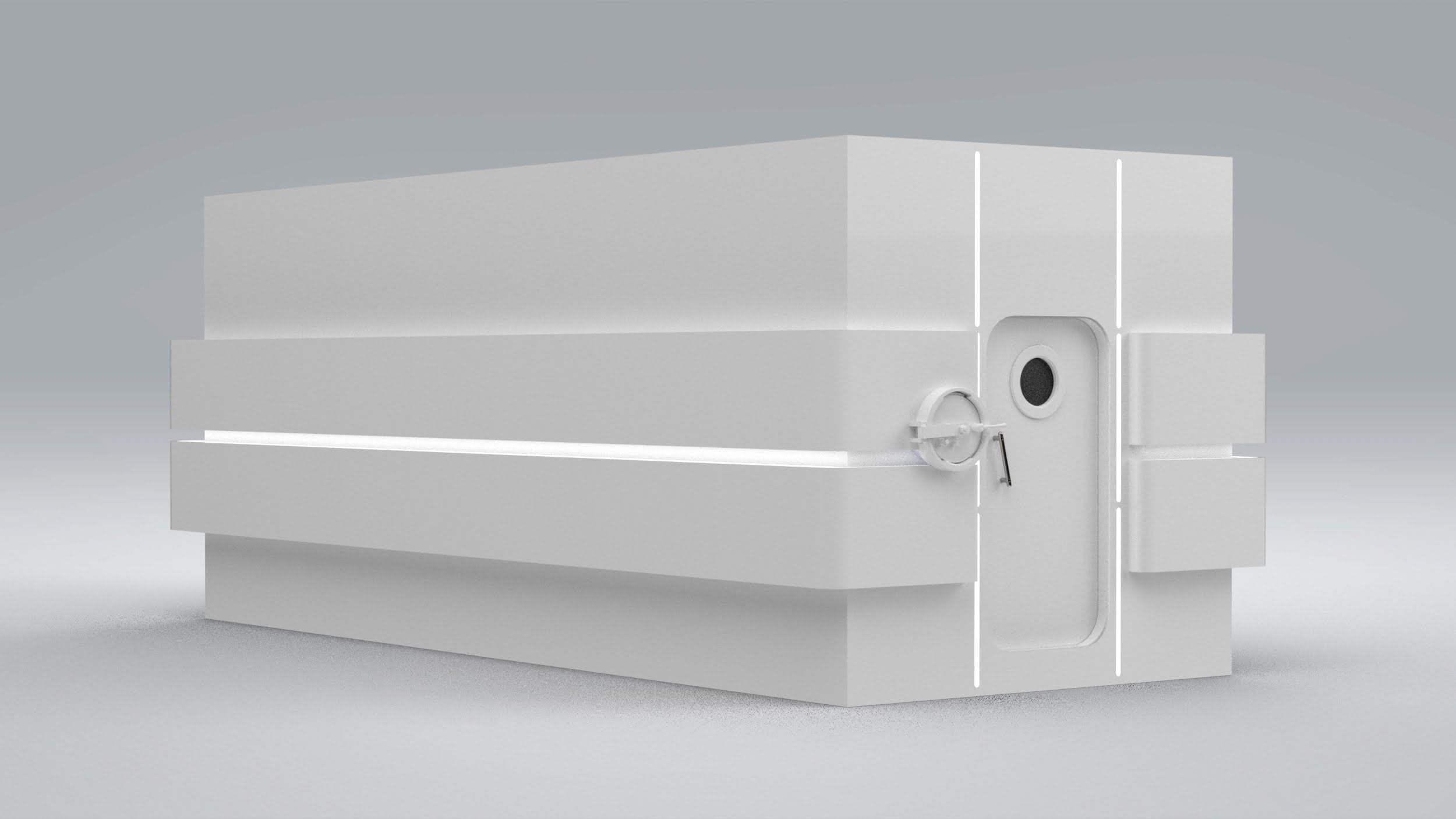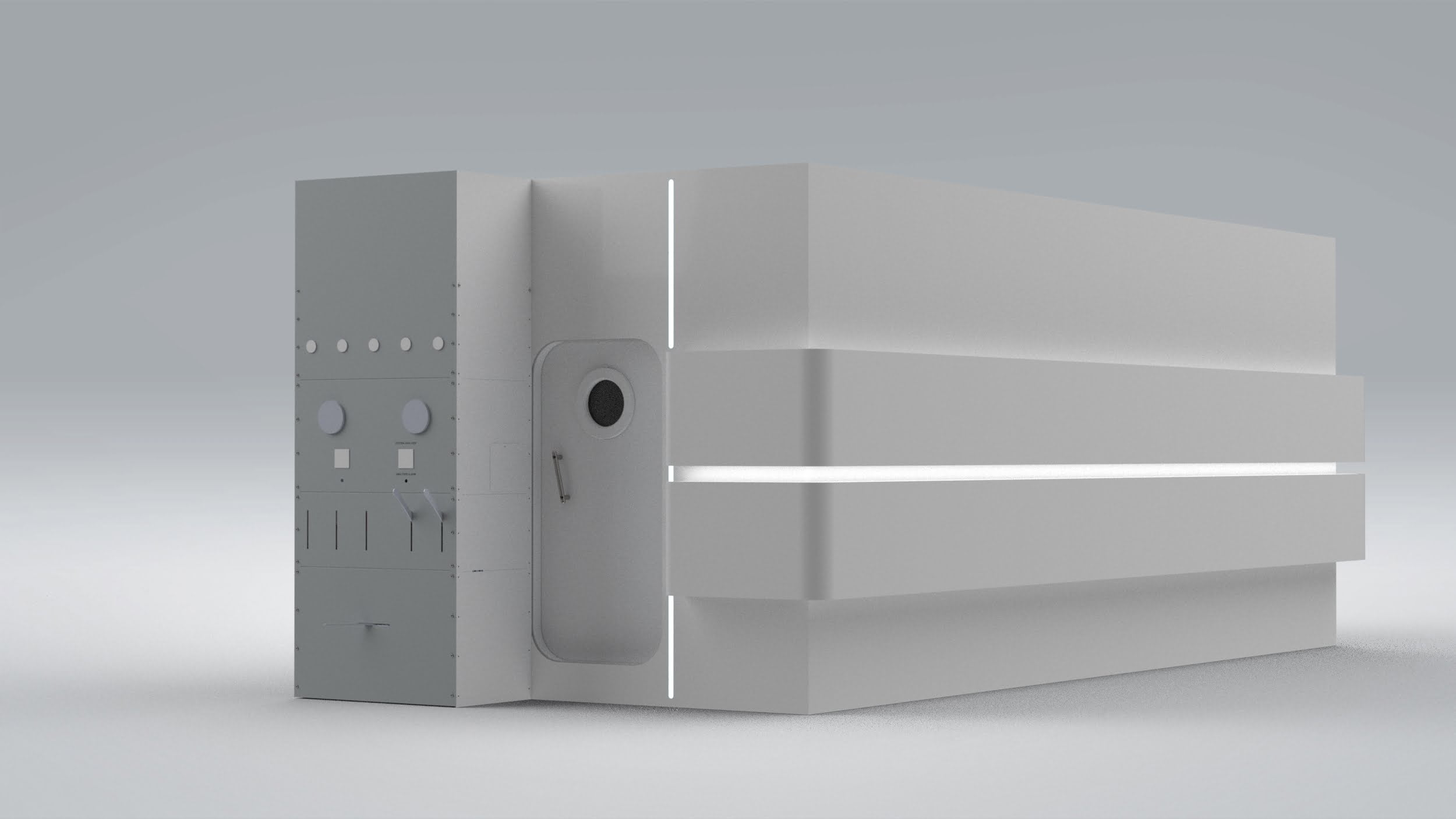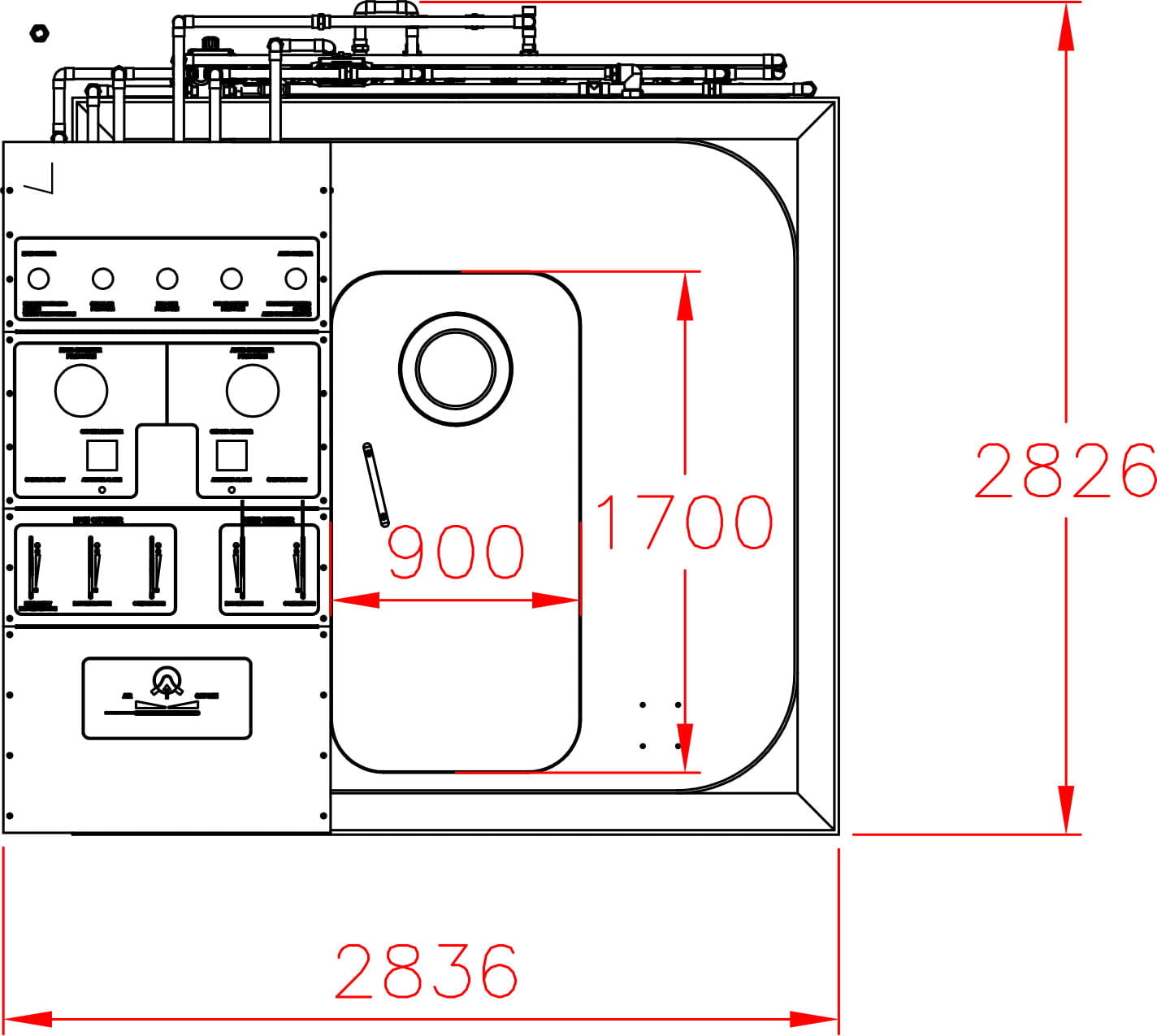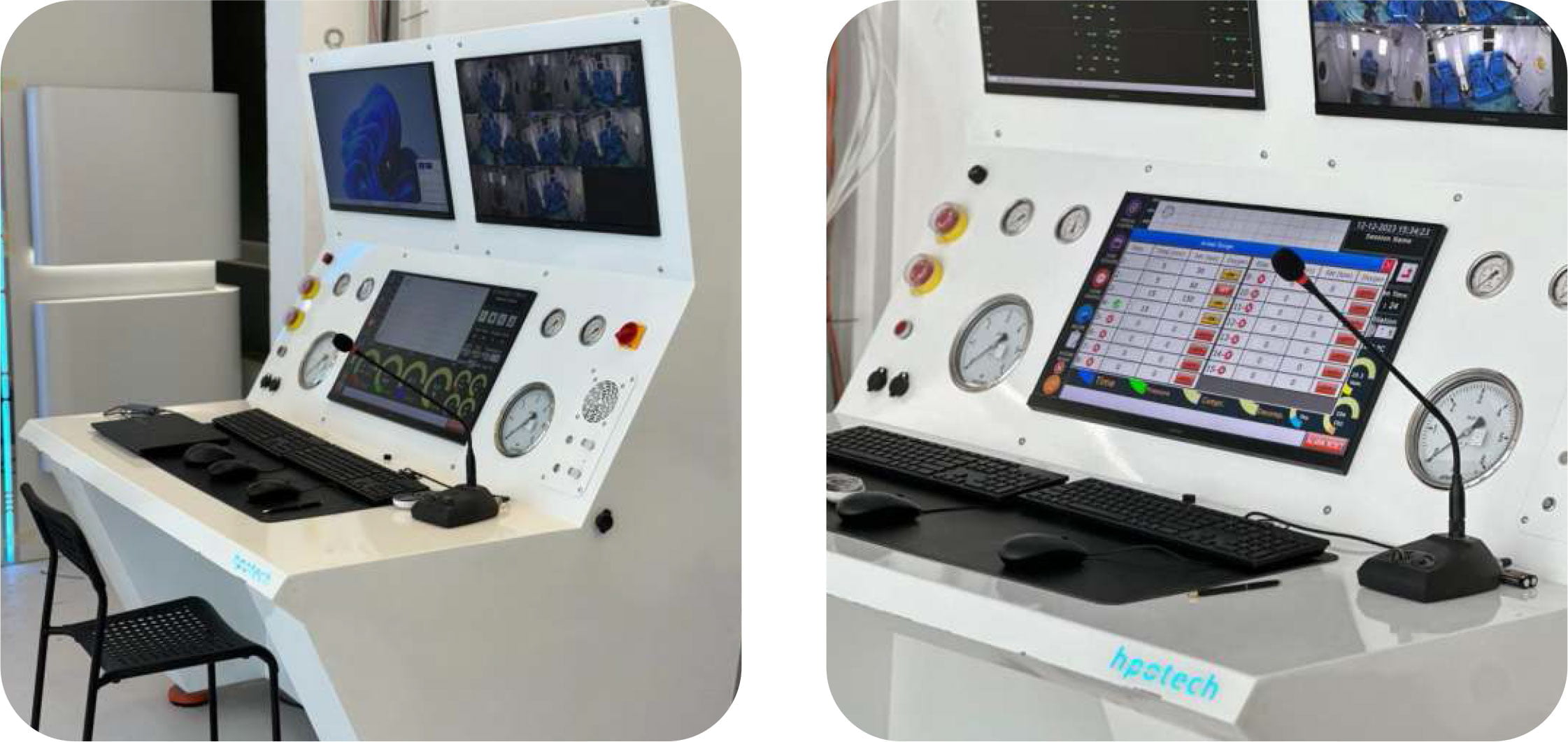The Bryan Johnson hyperbaric chamber experiment
What if reversing aging was as simple as breathing oxygen… under pressure? Tech entrepreneur and (legendary) biohacker Bryan Johnson is testing hyperbaric oxygen therapy (HBOT) in one of the most comprehensive longevity experiments to date.
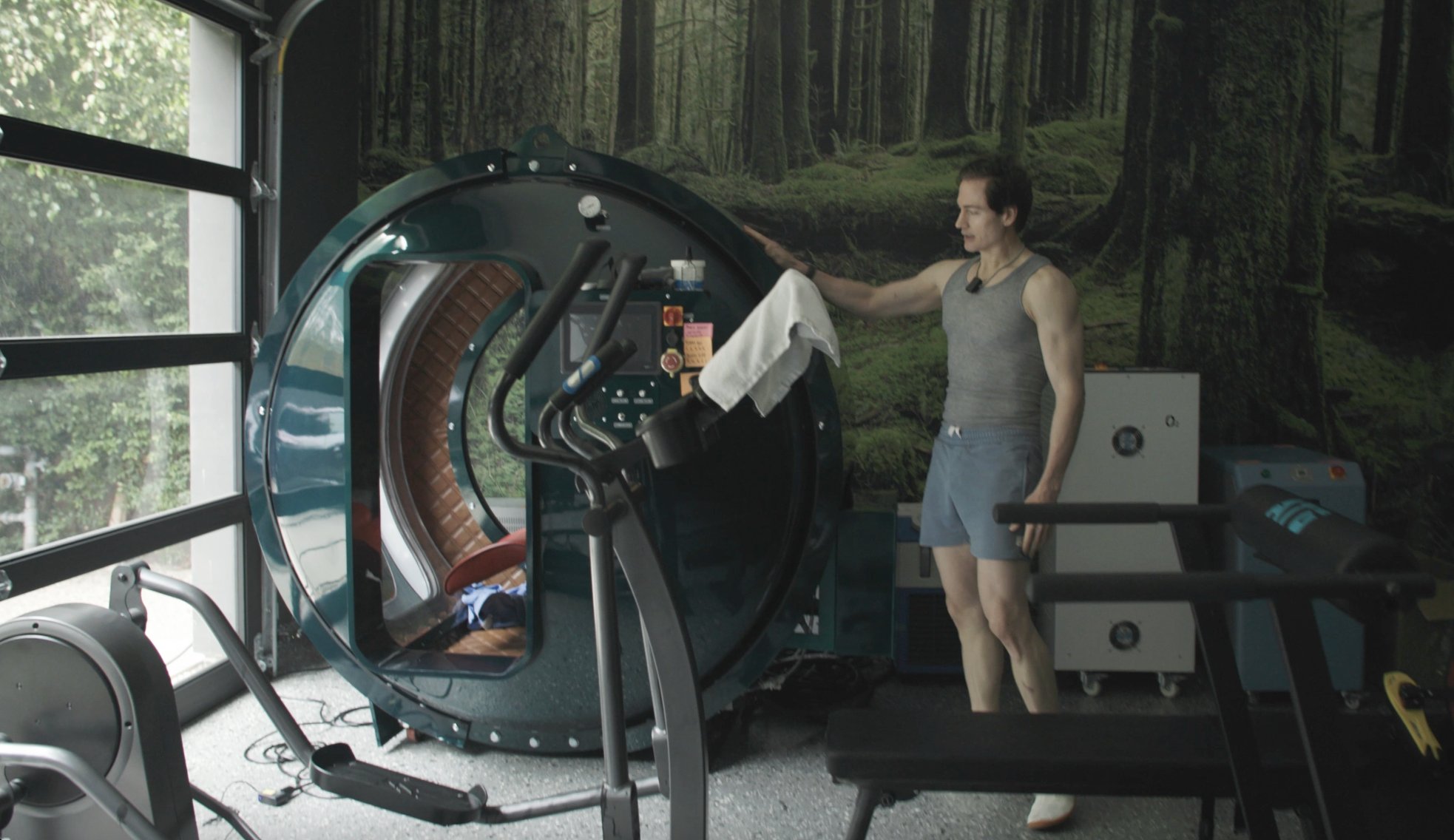
The HBOT experiment is conducted using the ZEUGMA hyperbaric chamber (2.0 ATA) made by HPO TECH. Bryan is tracking all relevant biomarkers from telomere length to collagen production and brain function to see if oxygen can slow, or even reverse, biological aging.
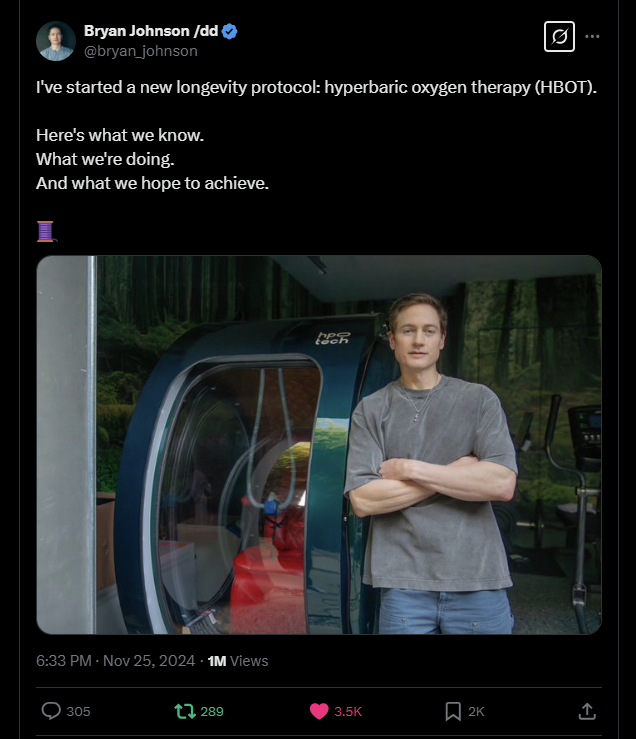
Bryan Johnson is no stranger to pushing the boundaries of human longevity. As the architect of the ‘Blueprint‘, his meticulously designed protocol to slow aging, he has become one of the most measured men in history, or “The Man Who Wants To Live Forever”, as seen on Netflix.
Don’t Die meets HBOT
Bryan’s philosophy is simple but audacious: “Don’t Die.” Now, he’s adding another powerful tool to his arsenal, hyperbaric oxygen therapy (HBOT), using our flagship hyperbaric chamber ZEUGMA (2.0 ATA).
In this clip, part of a longer video, rock climber Magnus Midtbø visits Bryan Johnson’s home gym to learn about his comprehensive health routine. Magnus tries the ZEUGMA hyperbaric chamber (2.0 ATA), getting his first taste of HBOT and exploring its benefits. Video copyright: Magnus Midtbø YouTube
Bryan’s HBOT protocol
Bryan has embarked on a rigorous HBOT protocol inspired by celebrated research in telomere-length and longevity. The experiment involves 60 sessions, five per week, each lasting between 60-120 minutes, with 5 minutes air break after each 20 minutes, conducted in the ZEUGMA hyperbaric chamber (2.0 ATA) made by HPO TECH.
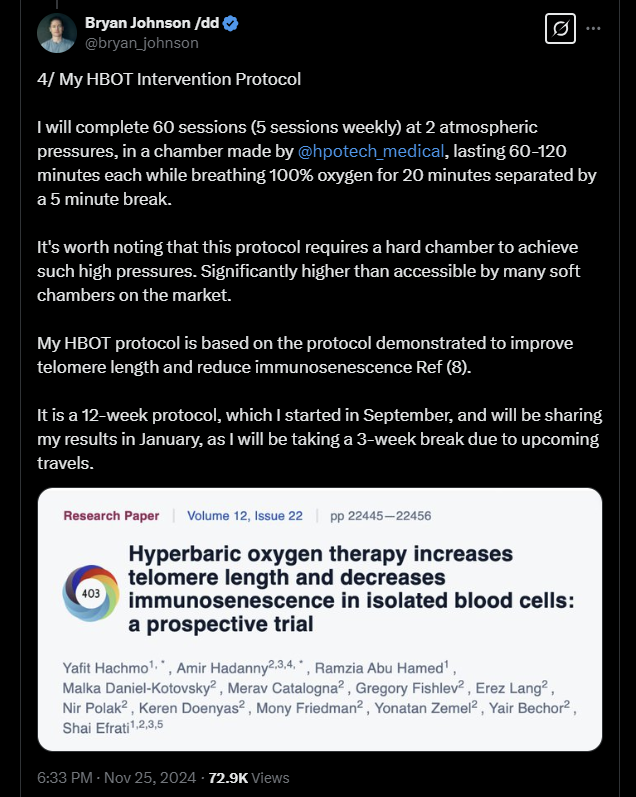
Bryan’s goal?
To systematically measure the effects of HBOT on biological aging, inflammation, cognitive function, and physical performance through one of the most extensive biomarker tracking initiatives ever attempted in clinical studies.
He’s doing quantitative research using epigenetic clocks, neuroimaging, and metabolic assessments. Bryan aims to quantify whether HBOT can slow, halt, or even reverse certain aspects of aging.
The science behind the HBOT experiment
HBOT has long been used in medical settings for treating conditions like carbon monoxide poisoning, chronic wounds, and sports injuries. However, its potential as a longevity intervention has recently gained serious traction. Bryan’s focus is on its potential benefits for aging and longevity.
Landmark clinical trials have suggested that HBOT can increase telomere length, improve physical performance, reduce inflammation, and enhance cognitive function. Bryan is particularly interested in its potential to slow down epigenetic aging, which is measured using PACE (epigenetic clocks).
Bryan Johnson is conducting an N=1 experiment (a self-experiment) to measure the effects of hyperbaric oxygen therapy (HBOT) on health, longevity, and performance across a broad set of biomarkers.
His goal is to quantify HBOT’s impact on biological aging, inflammation, cognitive function, and overall physiological performance.
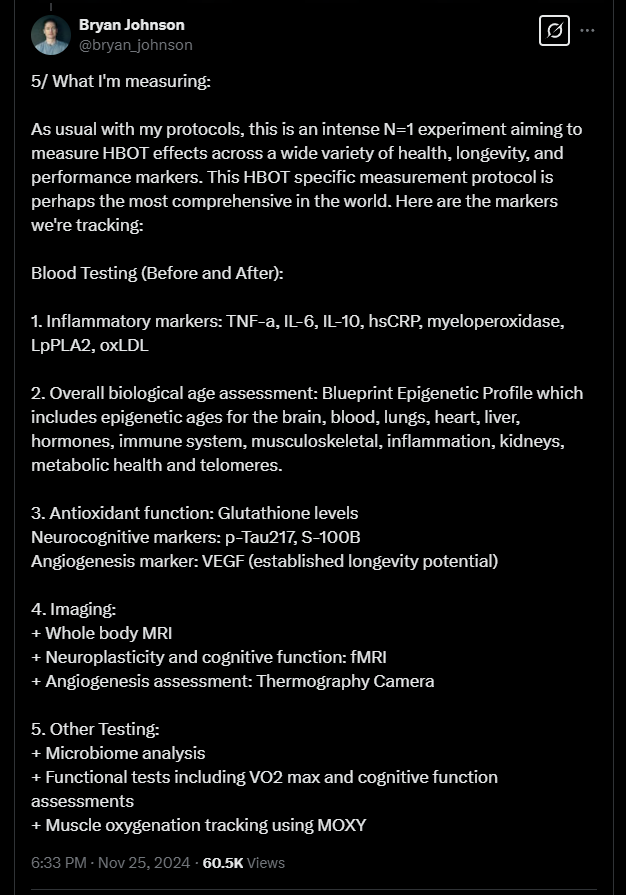
Bryan’s objective
Here’s what he’s aiming to achieve by tracking these markers:
Biological age and longevity
- Epigenetic profile: Measures how HBOT affects aging at the cellular level across multiple organ systems (brain, blood, heart, liver, etc.).
- Telomere length: Track changes in telomere health, a key longevity indicator.
- VEGF (Vascular Endothelial Growth Factor): Assesses angiogenesis (formation of new blood vessels), which is linked to longevity.
Reducing inflammation & oxidative stress
- Inflammatory markers (TNF-a, IL-6, IL-10, etc.): Measure whether HBOT reduces systemic inflammation, which is linked to aging and disease.
- Oxidized LDL & Myeloperoxidase: Track improvements in oxidative stress and cardiovascular health.
- Glutathione levels: Evaluate antioxidant function and how HBOT supports cellular repair.
Cognitive function & brain health
- Neurocognitive markers (p-Tau217, S-100B): Look at HBOT’s potential in preventing neurodegenerative diseases like Alzheimer’s.
- fMRI & whole-body MRI: Analyze brain structure, neuroplasticity, and overall tissue health.
Optimizing physical performance & metabolic health
- VO2 Max & Muscle Oxygenation (MOXY): Measure HBOT’s effect on endurance and exercise capacity.
- Microbiome analysis: Assesses gut health, which is crucial for overall metabolic function and immunity.
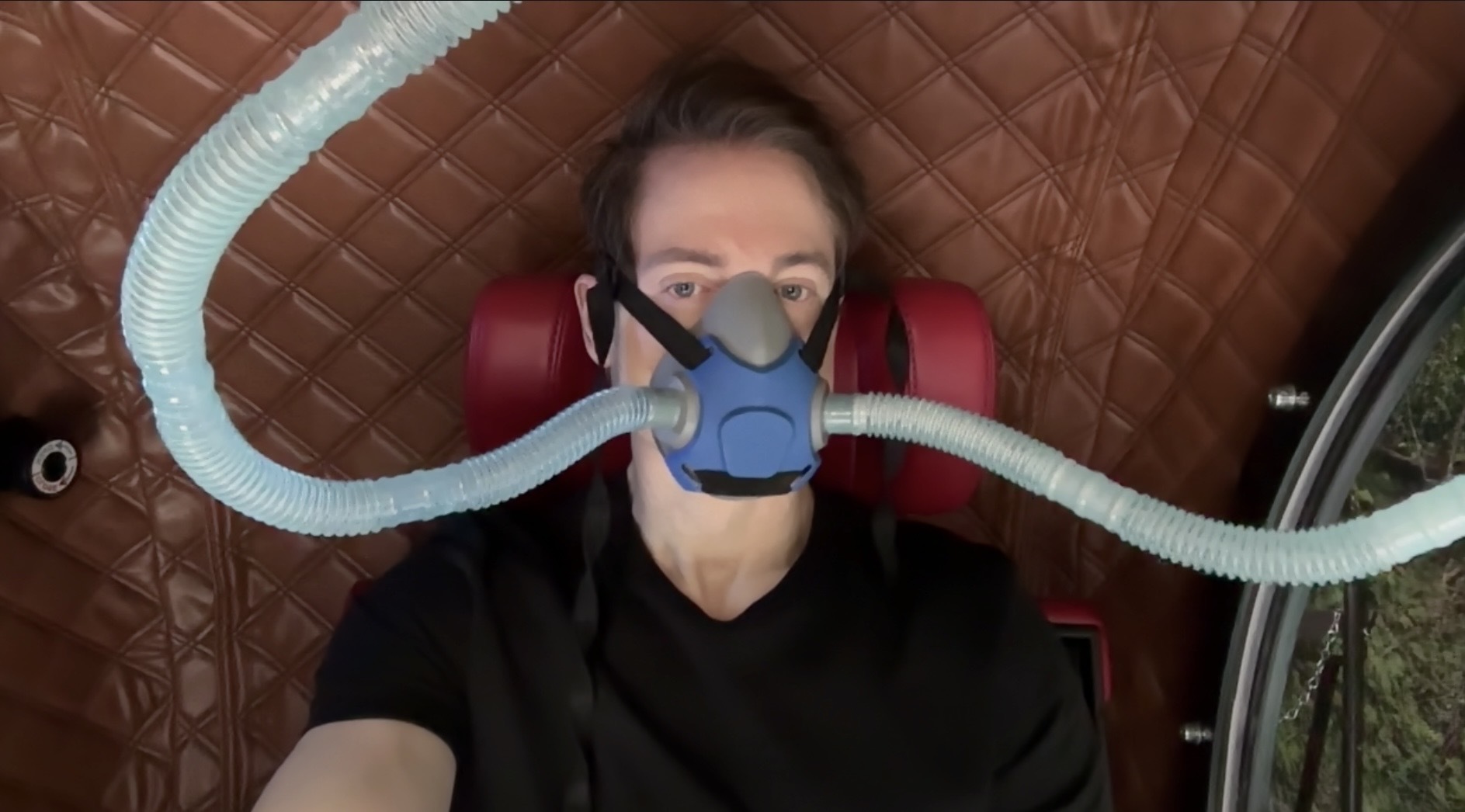
The big picture
Bryan Johnson is systematically quantifying HBOT’s effects on both short-term performance and long-term healthspan extension.
By tracking such a wide range of biomarkers, he aims to understand whether HBOT can slow aging, enhance cognitive function, improve recovery, and optimize overall health—essentially, seeing if it can help reverse biological age and boost human potential.
His approach aligns with his broader Blueprint protocol, where he uses extreme data-driven interventions to push the limits of longevity and performance.
Early findings: a glimpse into the data
With 35% of the experiment completed (21 out of 60 sessions), Bryan has published results based on trends from past studies suggest potential benefits from HBOT.
- VO2 Max increase by 2.46%, indicating better cardiovascular efficiency.
- VO2AT1 improvement by 6.42%, suggesting greater endurance.
- Telomere length may extend by 18.3%-25.7%, a significant marker of slower aging.
- Senescent T-cell reduction of up to 19.66%, implying better immune function.
Fitness improvements
An increase in VO2Max (maximum oxygen uptake) and VO2AT1 (ventilatory threshold) indicates better cardiovascular efficiency and endurance. Even a 2.46% increase in VO2Max means the body can deliver more oxygen to muscles, improving overall performance, stamina, and recovery.
The projected 6.42% boost in VO2AT1 suggests greater efficiency in using oxygen before reaching anaerobic metabolism, which enhances sustained performance in both athletic and daily activities.
These improvements are critical for longevity, as higher VO2Max is strongly correlated with reduced mortality risk, better heart health, and improved metabolic function. However, given Bryan’s already high baseline (52.3 ml/kg/min), his actual increase might be more modest than those seen in studies on mid-aged athletes and elderly individuals.
Longer telomeres and less senescence
Telomeres protect chromosomes from deterioration, and their length is a key marker of biological aging. Longer telomeres are associated with better immune function, slower aging, and reduced risk of chronic diseases like cardiovascular issues and neurodegenerative conditions.
A projected 18.3%-25.7% increase in telomere length suggests that HBOT may help extend cellular lifespan and promote regenerative capacity. Additionally, the expected 12.21%-19.66% reduction in senescent immune T-cells is significant, as these aged, dysfunctional cells contribute to inflammation, weakened immunity, and age-related diseases.
Since Bryan already has long telomeres and low senescence, his absolute gains may be smaller, but even marginal improvements could have a meaningful impact on longevity and immune resilience.
Biological age
At the core of this experiment is the quest to measure and influence the pace of aging. Bryan Johnson is focusing on the DunedinPACE score, a key biomarker of biological aging. A score of 1.0 means aging is occurring at the standard rate—one year per calendar year. A lower score indicates a slowdown, while a higher score suggests accelerated aging.
If HBOT can significantly reduce Bryan’s PACE score, it could serve as a foundational therapy in personalized longevity protocols.
By assessing multiple epigenetic clocks, including DunedinPACE, DNAmAge, and organ-specific aging markers, this experiment explores whether HBOT can not only slow aging but potentially reverse aspects of it. These clocks measure DNA modifications that reflect how fast the body is aging at a cellular level.
A lower DunedinPACE score suggests a slower aging trajectory, while a decline in DNAmAge signals overall rejuvenation. Improvements in organ-specific aging, such as in the lungs, could enhance respiratory function, endurance, and cardiovascular resilience, all critical for long-term health.
These insights reinforce HBOT’s potential to optimize mitochondrial function, reduce oxidative stress, and enhance tissue repair, key factors in promoting healthier, longer aging.
The (long) road ahead
Bryan has now completed 70+ hours of HBOT over 90 days.
The final post-experiment analysis will examine telomere length, DNA methylation patterns, inflammatory markers, mitochondrial function, and brain scans to determine its full impact. This is longevity science in real time, meticulously measured, relentlessly optimized, and transparently shared with the world.
In the end, Bryan’s experiment is more than just about hyperbaric oxygen therapy, it’s about pushing the limits of what’s possible through data, discipline, and relentless self-experimentation.
Whether HBOT proves to be his secret of longevity or just another step in the journey, one thing is certain: Bryan Johnson isn’t waiting for the future of human optimization, he’s creating it.
And in his world, there’s only one rule: Don’t die.

